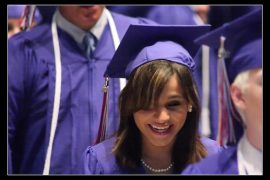Raise your hand if you’re trying to get in shape for swimsuit season or a wedding? (I’m raising my hand!) May is prime time for folks to either get more serious about fitness or fall off the wagon. But fitness coaches like Chappy Callanta can help us stay focused to the very end — and then keep toned and slender. His gym in the Phillippines, 360 Fitness Club, not only offers expertise but equipment and classes, too. And — you guessed it — Chappy uses math. Here’s how.
Can you explain what you do for a living?
I develop strength and conditioning as well as general fitness programs for my gym. It involves a lot of research, a lot of experimentation and of course a lot of exercise. I also train teams and personal clients. I help them lose weight, get stronger, achieve a specific goal like running a marathon or even manage special conditions. I also write for Yahoo Philippines as their resident fitness blogger, and I maintain my own blog. My passion is fitness and wellness, and my mission is to spread the good word of being healthy to as many people as I can.
When do you use basic math in your job?
All the time actually. I use math when we compute for ideal weights of clients, find the right training load, or determine the number of calories one needs to consume to achieve a weight loss goal. I use math whenever I design programs for my clients. One specific situation when I use simple math would be when dealing with a weight loss client. One pound of fat is 3,500 calories. If you want to lose weight at a rate of 1 pound of week (which is doable and not too hard), you will have to create a deficit of 3,500 calories per week. I present this to a client and break down how she will be able to do it. We divide it by 7 because there’s 7 days in a week. Then we divide it by 2 because you want to lose weight through exercise and diet. That leaves you with 250 calories that you have to lose via exercise, and 250 calories through your diet. We’re just subtracting 250 calories per day from her regular diet and adding 250 calories worth of exercise per day. We compute for this using the MET system (metabolic equivalent of tasks) which takes into account the weight of a person and multiply it to the corresponding MET value of a specific activity.
Calories Burned ÷ hour = Weight in KG • MET value
For example, I weigh 80kg. The MET value for jumping rope is 10Mets. So if I skip rope for 1 hour I will lose 800 calories. That means if I want to lose 250 calories, the equation is:
Time = 250 cal ÷ (800 cal ÷ 60) = 18.75 minutes
Do you use any technology (like calculators or computers) to help with this math?
I usually don’t since I’m so used to it already. I write it down though on paper while I’m computing it so my clients see how the math works.
How do you think math helps you do your job better?
It helps me to explain how the body works and how easy it is to lose or gain weight by using basic math and applying it to food and exercise. I believe that every trainer should practice mental math, so it’s easier to compute for the right training volume and intensity, as well as using the right load for each exercise.
How comfortable with math do you feel?
I’m relatively comfortable with basic math. There really isn’t much calculus involved in my line of work. Most of it is basic arithmetic and operations. Geometry is also important when analyzing sports and the optimal angles of the joints for a specific activity. Research shows how the ankles, knees, and hips should be angled for example when diving off the high dive. It’s useful information and it’s pretty cool also.
What kind of math did you take in high school?
I took Algebra, Geometry, Trigonometry and Calculus. I enjoyed it until we got to calculus. My grades showed that I was good at it but I enjoyed Geometry the most.
Did you have to learn new skills in order to do the math you use in your job?
It was something that I already knew but I felt that I needed to practice it more. I practiced the equations and mental math with my clients so that today, I’m confident that I can do basic operations off the top of my head.
Do you have questions for Chappy? Feel free to ask in the comments section, and I’ll let him know. Also, take a look at his blog, which features great, inspirational tips.








Comments are closed.